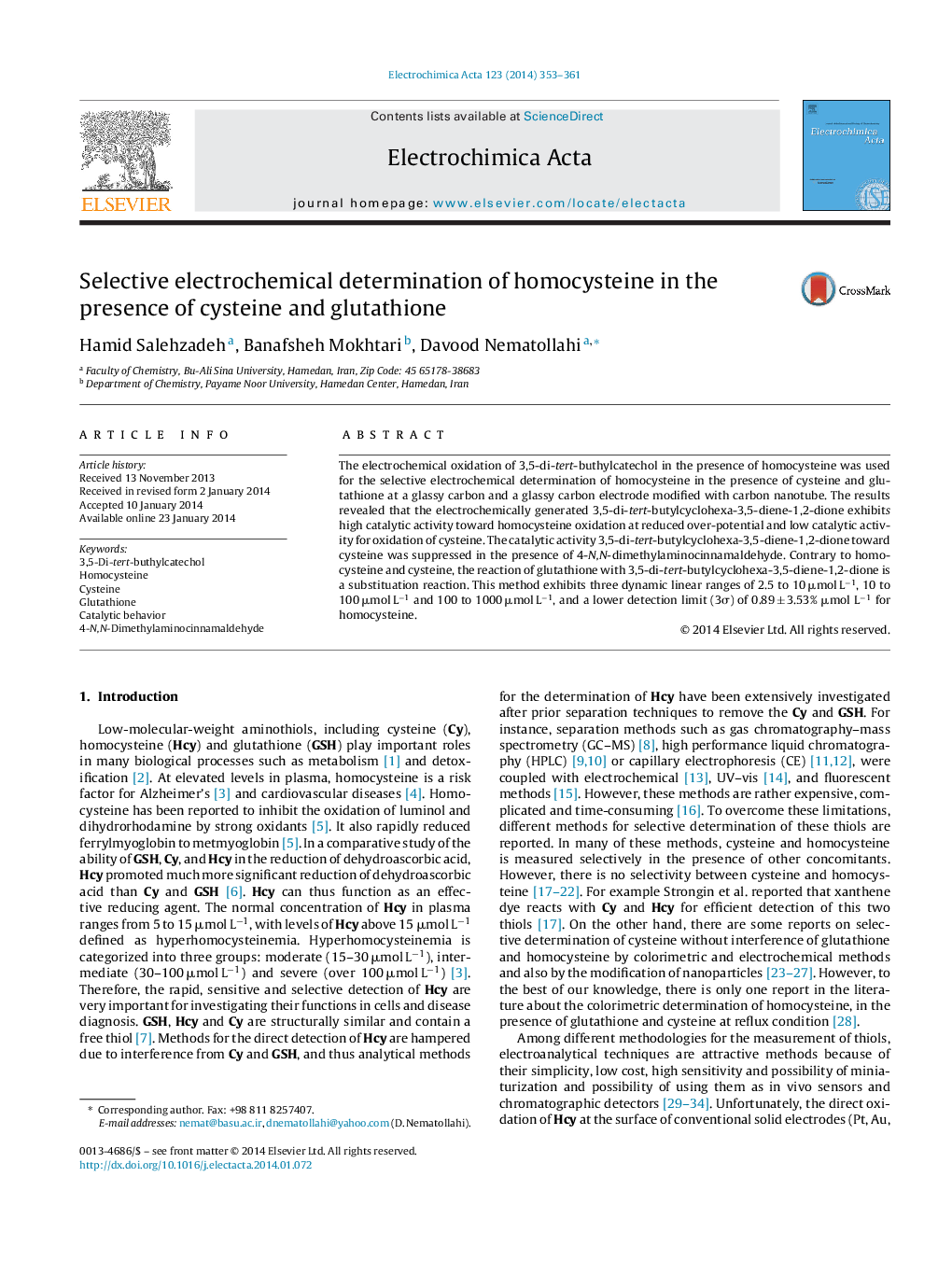| Article ID | Journal | Published Year | Pages | File Type |
|---|---|---|---|---|
| 186031 | Electrochimica Acta | 2014 | 9 Pages |
•Selective electrochemical determination of homocysteine.•Catalytic electron transfer of 3,5-di-tert-buthylcatechol in the presence of homocysteine.•Michael type addition reaction of electrochemically generated 3,5-di-tert-buthyl-o-benzoquinone with glutathione.
The electrochemical oxidation of 3,5-di-tert-buthylcatechol in the presence of homocysteine was used for the selective electrochemical determination of homocysteine in the presence of cysteine and glutathione at a glassy carbon and a glassy carbon electrode modified with carbon nanotube. The results revealed that the electrochemically generated 3,5-di-tert-butylcyclohexa-3,5-diene-1,2-dione exhibits high catalytic activity toward homocysteine oxidation at reduced over-potential and low catalytic activity for oxidation of cysteine. The catalytic activity 3,5-di-tert-butylcyclohexa-3,5-diene-1,2-dione toward cysteine was suppressed in the presence of 4-N,N-dimethylaminocinnamaldehyde. Contrary to homocysteine and cysteine, the reaction of glutathione with 3,5-di-tert-butylcyclohexa-3,5-diene-1,2-dione is a substituation reaction. This method exhibits three dynamic linear ranges of 2.5 to 10 μmol L−1, 10 to 100 μmol L−1 and 100 to 1000 μmol L−1, and a lower detection limit (3σ) of 0.89 ± 3.53% μmol L−1 for homocysteine.
Graphical abstract3,5-Di-tert-buthylcatechol was used for the selective electrochemical determination of homocysteine in the presence of cysteine and glutathione at the glassy carbon and carbon nanotube modified glassy carbon electrode.Figure optionsDownload full-size imageDownload as PowerPoint slide
